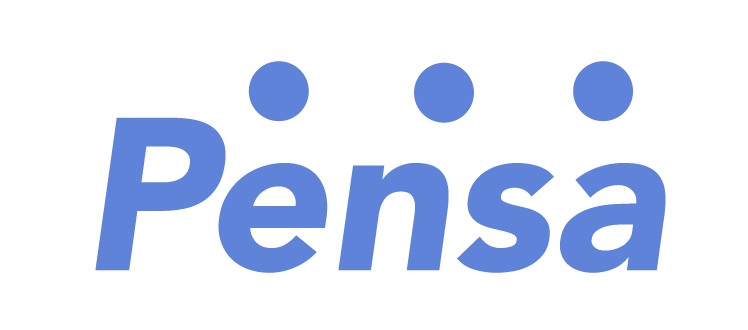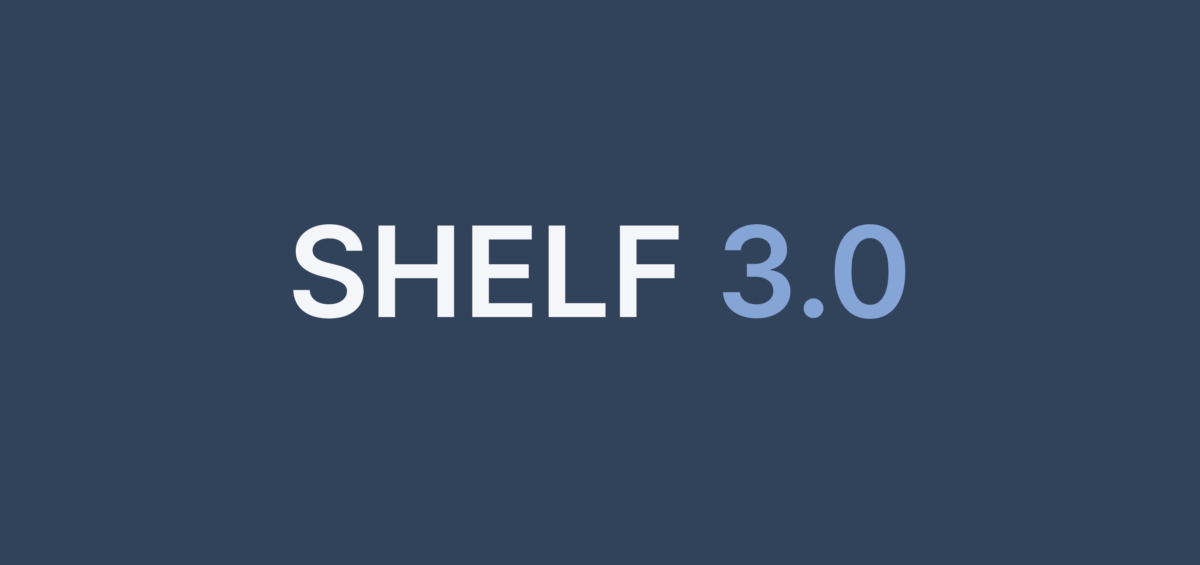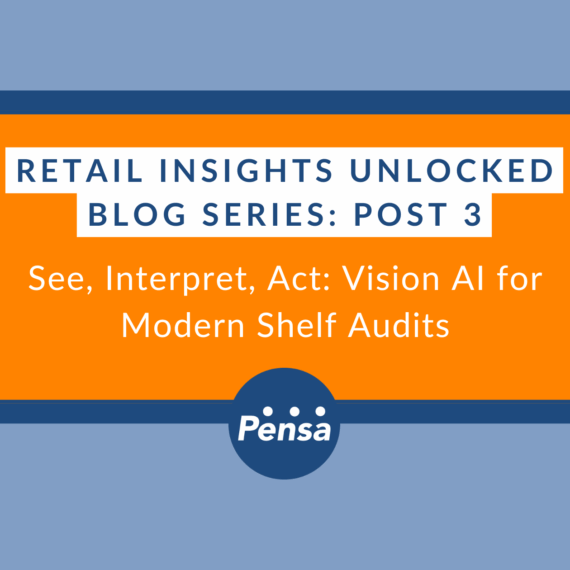In the CPG industry, share of shelf has emerged as the key measure that separates winners from losers.
As part of the Category Management Association’s (CMA) educational program, we recently hosted a webinar featuring retail expert, co-founder and former CEO of InfoScout Jared Schrieber and Pensa Systems CEO Richard Schwartz where they discussed winning shelf strategies of standout brands, and how CPG brands can ensure they have accurate data to develop a successful shelf strategy. You can view the replay here.
The webinar introduced the concept of Shelf 3.0, the interplay between the online space and physical store that’s become business critical for CPG brands with the acceleration of omnichannel grocery Here are some key takeaways that inform some of the strategies that market leaders have implemented:
- Gaining market share – and a fair share of the market – starts by having a fair share of the shelf, ensuring continuous availability of your product, and understanding the availability of your competitors’ products.
- The number one lever for continuous growth of brands, year-over-year, is distribution. The important caveat is that the distribution must be followed up by the appropriate merchandising, packaging, and shopper marketing to be effective.
- Today, many brands are working off incomplete and inaccurate shelf condition information through ineffective legacy data sources, inhibiting their ability to react quickly to market needs.
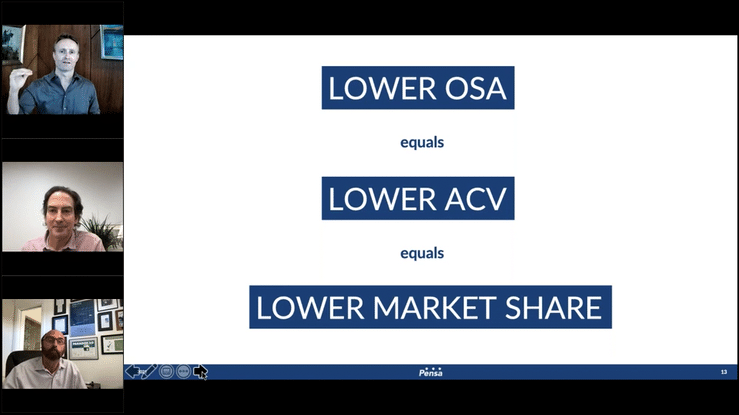
- Lower OSA = Lower ACV = Lower Market Share. Traditional all-commodity volume (ACV) and total distribution points (TDP) metrics only measure what goes through the register, not what’s actually available to be purchased at the shelf. ACV can’t actually help with understanding true demand; only On Shelf Availability can do that.
- A small number of standout brands are winning the battle for shelf space with thoughtful but often simple tactics that break many traditional rules.
Here are some of the key themes from the discussion that can help guide brands on practical ways to succeed in the battle for shelf space.
Standout Brands Are Using Dynamic Shelf Strategies
Schrieber recently completed a study that tracked more than a million shoppers, making more than a billion shopping trips, over a five-year period. The study integrated information about advertising campaigns and in-store promotions and determined what motivated shoppers, and what separated winning brands from less successful brands. [The study anchors a soon-to-be released book, Breakout Brands that can be pre-ordered here.
Out of the 25,000 brands in the study, just 58 were standouts. Procter and Gamble was the runaway winner, owning seven of those 58 brands.
Front and Center. One of P&G’s successful strategies was in-store merchandising that leverages a product portfolio covering many different categories. By putting a product portfolio display front-and-center in stores, shoppers were dissuaded from even going down the aisles to consider other options. If a consumer had Tide on their shopping list, they would simply grab air fresheners and paper towels from the same displays.
Helping With Complex Decisions. Nicorette was one of only two brands in the study that was winning the battle against private label. The company realized that the smoking cessation aids category is a complex buying decision. People can be light or heavy smokers. They might want to quit altogether, reduce their smoking, or just address the anxiety of smoking. In addition, shoppers must evaluate different form factors, like patches versus gum. Realizing that consumers were struggling to make the right decision, Nicorette created in-store signage, which guided shoppers to the right choice for them. More often than not, that led to them to Nicorette, while helping retailers grow overall sales and margins for the category.
Use Strong Brands to Bolster Weaker Ones. Unilever increased lagging sales for its antiperspirant deodorants by constantly marketing them, promoting them, and displaying them with the company’s stronger brands, such as lotions and body washes.
Catch Consumers’ Eyes. Caulipower, a healthy food company, broke all the rules in terms of packaging. They turned their product into a billboard display, such as using the catchy tagline “They Said It Was Impastable” for a linguine product.
Shelf 3.0 Has Arrived, and Category Managers Need to Take Heed
Technology circles have been abuzz about Web 3.0, the next iteration of the Internet which focuses on decentralization. The retail industry is experiencing a similar development, Shelf 3.0, as retailers and brands realize that learnings about what works online can be transferred back into the physical store. A simple example Jared shared is retailers using online reviews to influence the behavior of in-store shoppers to try new products.
The availability and location of items in store have significant implications for fast delivery, and the ability to buy online and pick up at the store. A consumer who purchases an item online may not pick it up for minutes, hours or even days later. Retailers need to understand the availability of items, and know when they are running low, to make smart basket substitutions and maximize in-store promotion of products.
Many Brands Are Working Off Bad Information
Another challenge that inhibits retailers and brands is the mismatch between legacy approaches to estimate on-shelf-availability and the needs of a Shelf 3.0 era. Sending people into stores to do custom audits is too expensive to do frequently. The classic method of determining inventory is to compare what arrived at the loading dock (Perpetual Inventory) with Point of Sale data. However, Pensa data shows that information can be up to 20% wrong. This is compounded by the fact that many CPGs do not have planograms (and even for the ones that do, the planograms can be 30% off.) The POG you planned has very little to do with what shoppers see in store, which has a direct impact on your sales.
As a result, brands are typically working off sources of information that only provide a partial and incorrect view.
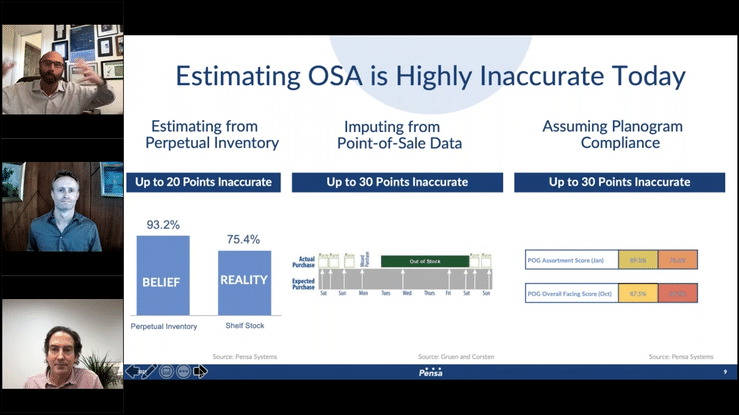
“Natural Experiments” Can Lead You to Success
Shrieber brought up an excellent example when he noted that the recent Nobel Prize for Economics went to scientists for their work in natural experiments. The concept is that experiments don’t have to be designed in a controlled laboratory environment, but are happening all around us every day. Think about the in-store environment as thousands of natural experiments at scale.You can run experiments over time with continuous shelf data, creating your own test and control scenarios. Your experiments will include real shoppers with real needs making real choices (a kind of new-age consumer choice model), which eliminates your need for virtual testing.
Out-of-stocks is a perfect example of an in-store, natural experiment. If a product was left out of a planogram, how would that affect sales and what alternative would consumers select? If you could piece together a view of what consumers saw on shelf and what they chose, that could be the basis for new kinds of consumer choice models.
Brands should measure same store consecutive repeat rate of consumers buying your product from one occasion to the next. If they are not repeating their behavior, you need to diagnose why. Trigger surveys, where you ping shoppers right after a purchase where they switched, is an excellent mechanism to inform strategies on everything from SKU rationalization assortments to product placement.
New solutions, like Pensa, makes continuous visibility of the shelf and on-shelf availability practical. Category Management is rapidly evolving with more cooperation between supply chain, marketing and sales, and other groups based on that visibility.
The Pensa Difference
Both CPG brands and retailers need to consider new approaches to better identify when legacy POS and inventory systems are not reflective of actual demand. Currently, with all the distorted signals in the system, contemporary changes in shopper behavior, and the demands of Shelf 3.0, it becomes business critical to figure this out.
Here’s where Pensa comes into play. Our solution uses computer vision and AI to visually understand and learn what’s on retail shelves, across all categories and channels, down to the individual SKU. We provide total category visibility across your brands, your competitors and even private label. We continuously see what’s out of stock or what’s running low. We identify real shelf share and other conditions that relate to issues on the shelf, the supply chain or store operations. And importantly, we do all this without needing a Planogram or any other input from you. Our set-up is fast and frictionless. In the end, with so much on the line, you can’t rely on guesswork; you need a verifiable source of truth for the retail shelf.
